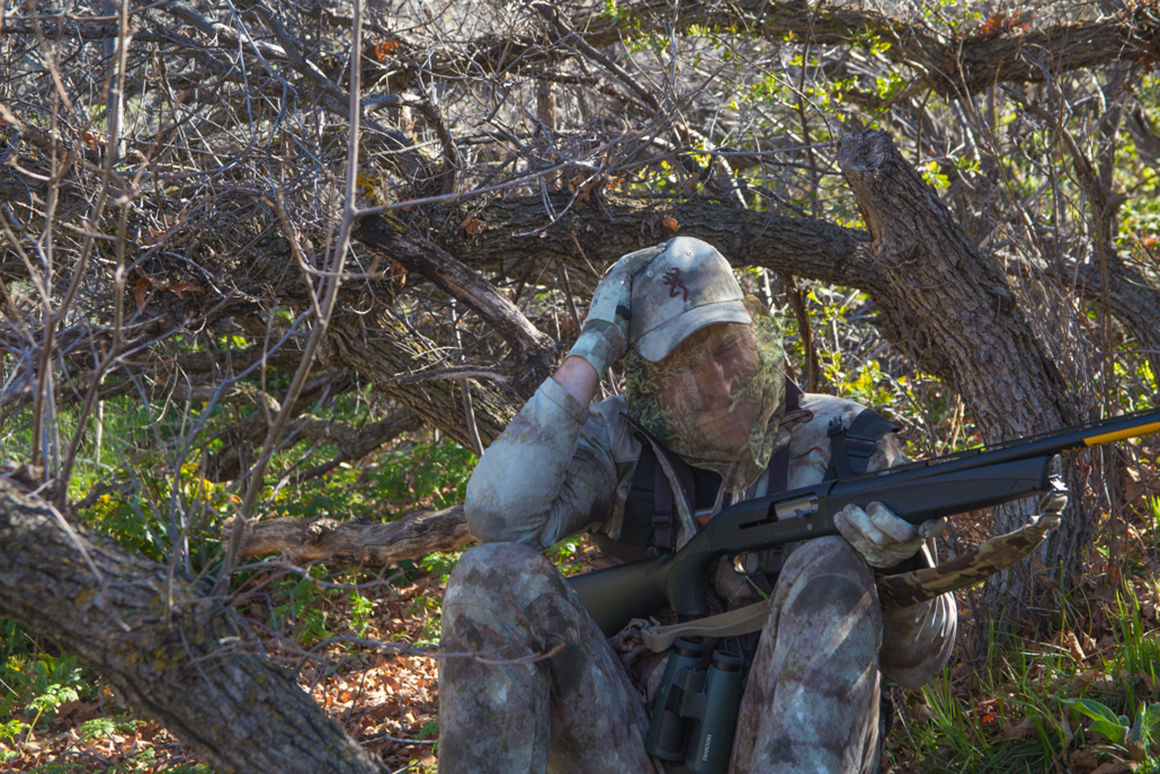The Final Tally
With turkey season done, or all but, it’s time to look back.
For what went right, we can give ourselves a hearty pat on the back for our ultimate expertise as gobbler hunters. Yeah, we sure knew what we’re doing. Unless, of course, we might have stumbled onto a bird or simply had one fall into our laps when we were about to doze off in the morning sun. With the robins singing, light sparkling off the bedewed spider webs, the comforting warmth under our hunting vests, the thought of hot flapjacks, sizzling bacon, steaming coffee back at the bunkhouse in an hour…I’m sorry, where was I?


I remember the last morning of an Alabama hunt many years ago without a gobble heard since very first light. Running and yelping had produced zero, and it was closer to noon than dawn. Two of us stood on a ridge, wondering what next, the woods utterly silent, and seemingly staying that way. Which is when, not far below us, a freight train roared through, blasting its horn. And the woods all around us lit up like the lights coming on on a carnival midway. Five-minutes later, I had a turkey. And the strategy? Carry a railroad timetable.
It’s easy to remember when the plans came together. They can all seem foreordained, all self-fulfilling prophecies–no matter how much flat-out luck was involved. The risk is that we conclude that all we need to do the next time is exactly the same thing, which assumes that the next time and conditions will all be the same, which they never are.
The difference they say, between a pat on the back and kick in the bottom is a mere matter of inches. Come season’s end, there can be far more value in listing all the things you did wrong, rather than resting on your laurels for what went right, and learn from those for next year.
There are universal errors which may be illustrated by looking at specifics. Here, then, are some of my own greatest hits.
Noise: Getting to and from a blind can be noisy; but if you get in early enough, and even more think about the gait of turkey or deer over leaf-strewn ground, if that’s what you have to cross, and imitate it, birds are unlikely to be overly perturbed. Once inside, though, absolute silence is paramount.

One rainy morning in Missouri, I had a big eastern coming in cautiously. Though slow, his progress was steady; and there looked like a shadow out beyond two or three rows of pine seedlings and scrub. Which is when the way I was sitting started to kill me. The two mistakes, then, were fundamental and random. To begin with, I should have made certain I had a seat that would let me remain comfortably motionless all morning. The random mistake was having an extraneous box call in the pocket of my vest. To make it worse, I didn’t have the paddle secured down with a rubber band. So, I shifted position, the call putt-ed, the gobbler left, and all I got for my trouble was a thorough soaking. For the list–a better seat and leave all non-essential calls at home.
Field of View: The temptation is to camo yourself up so much that not only cannot any turkey see you, you are unlikely to be able to see any turkey. Hunting in Kentucky, I decided to use a full-face camo veil without eyeholes, on the theory that I wasn’t going to let a turkey see even the whites of my eyes. You guessed it: Turkey came in and it was like looking through a pea-soup fog. Shotgun went whoooomp, turkey went pffft, I went home, without the annoying weight of a gobbler to carry.
Position: Your sitting position or blind should let you see at least 180-degrees with a minimum of head and eye movement. And you should also place your decoy in the most opportune position for you to shoot. Going after Osceola in Florida, I set up on a white-sand tote road. There didn’t look to be much room directly ahead of where I sat with my back against a white pine; so, for some reason unknown even to me to this day, I put the deke out about 30 yards to my left. Which is to where the two gobblers, a jake and a longbeard, came running after one yelp. Twisting to get the shot, I didn’t. Adding this failure to the list.
Time of Day: First light, first light, first light. That’s all we seem to think about when hunting turkey. And yes, I have killed more turkey early than late. But except perhaps in the warmest weather, turkey can and do move all day. Often, after gobbling and possibly mating in the early hours, by midmorning they are ready again. Come evening, they are headed back to the roost. Trains may run on timetables, but turkeys do not.
Keep a Full Magazine: Hunting Gould’s in Mexico, I forgot that I had jury-rigged a wood plug in the mag of my pump for birds in New Zealand, where only two-shot guns are legal. Now I had a big Gould’s in range and rolled it, only to have it get up and run. I chucked a second shell, fired, then chucked a third time and nada. No telling if I would have got that bird with the third shot; but I might have, especially if I had a Browning No. 4 TSS Tungsten Turkey.
We learn from our mistakes, they say. But the idea, one season to the next, is to make fewer and fewer. Which comes with analyzing them.
Follow Browning Ammunition’s social media channels for more hunting and shooting tips and updates on Browning Ammunition supported events and promotions on Facebook, You Tube, Instagram and Twitter.



